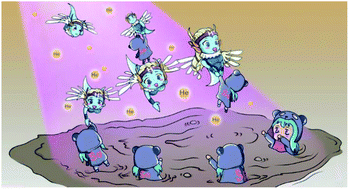A novel vapor generation method using hydrogen-containing plasma for Se direct solid sampling
Abstract
Sample introduction is one of the key factors restricting the development of fast, simple, high sensitivity and high throughput new analytical methods. In this work, a novel vapor generation method by hydrogen-containing plasma for direct solid sampling was proposed. The mechanism of vapor generation by hydrogen-containing plasma and the feasibility of quantitative elemental analysis by this method were discussed. The reduction of the oxidation state of Se is thermodynamically feasible with hydrogen radicals H*. Selenium on the surface of solid samples was efficiently converted to volatile molecular species. The optimum conditions for the proposed method coupled with atomic fluorescence spectrometry (AFS) as well as interference from coexisting elements were investigated. It was found that Fe, Cu, Ag, Au, Sb and Te had a significant enhancement effect on Se. Under the optimized conditions, the detection limit of Se was 19.7 pg. To demonstrate the accuracy of the proposed method, three aqueous certified reference materials were analyzed. The results were in good agreement with those obtained by inductively coupled plasma mass spectrometry (ICP-MS). Spike recovery experiments for the evaluation of the accuracy were also carried out, with recoveries ranging from 97.3% to 100.7%.



 Please wait while we load your content...
Please wait while we load your content...